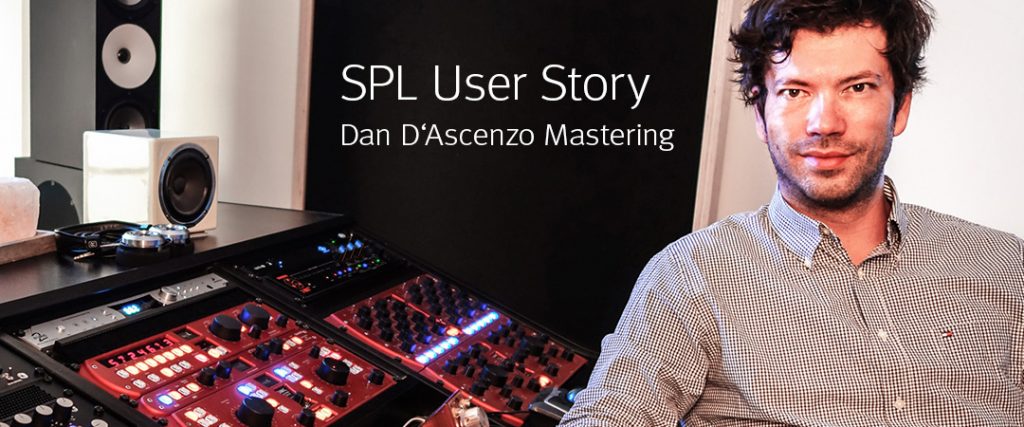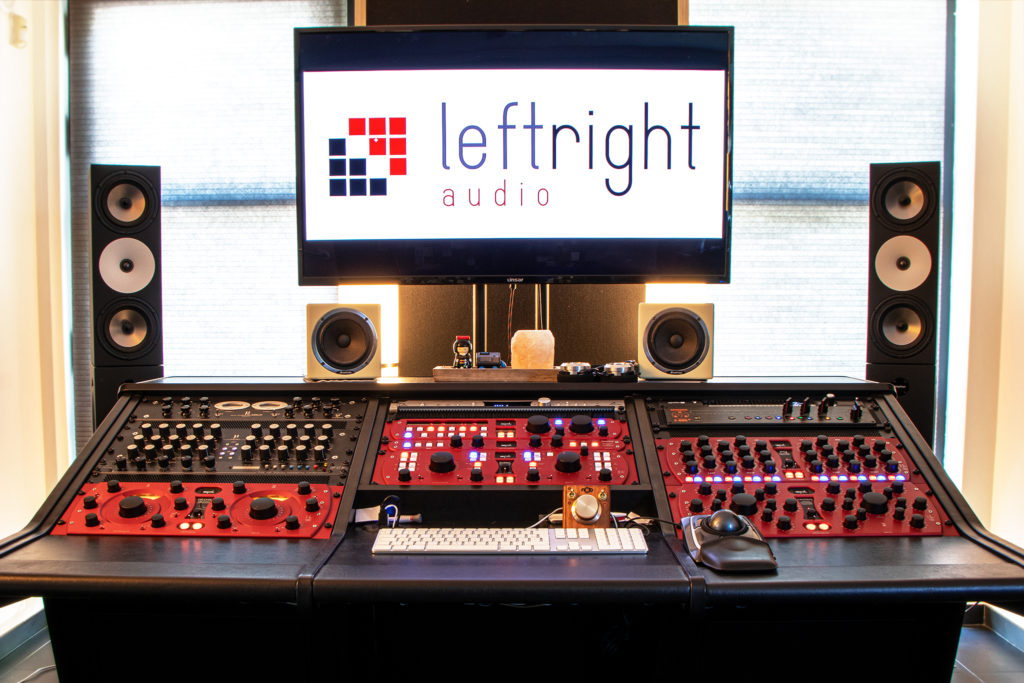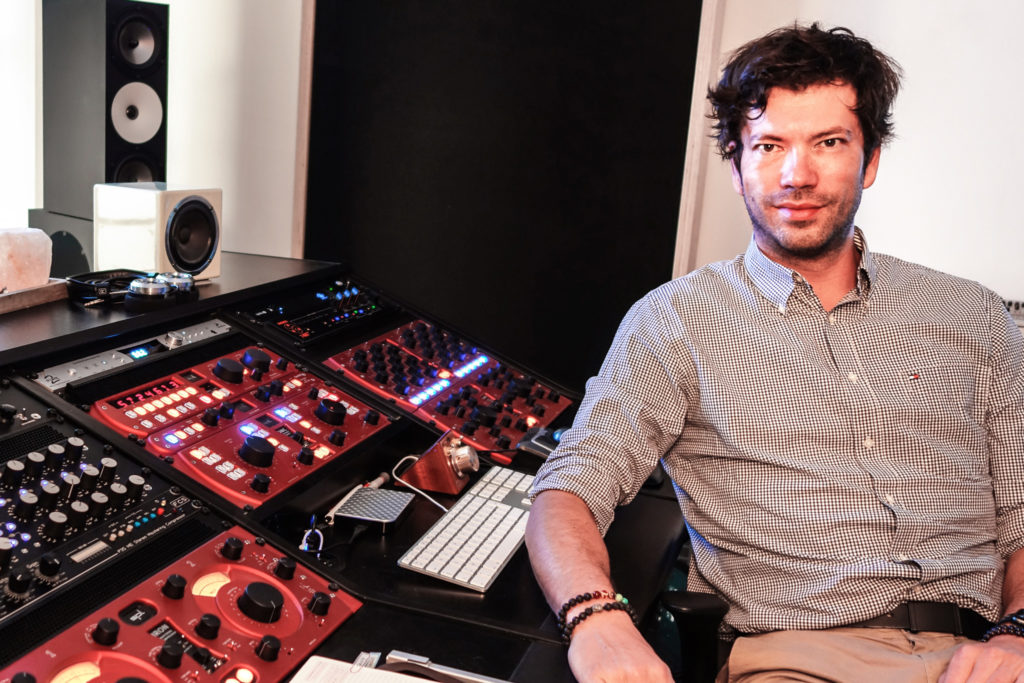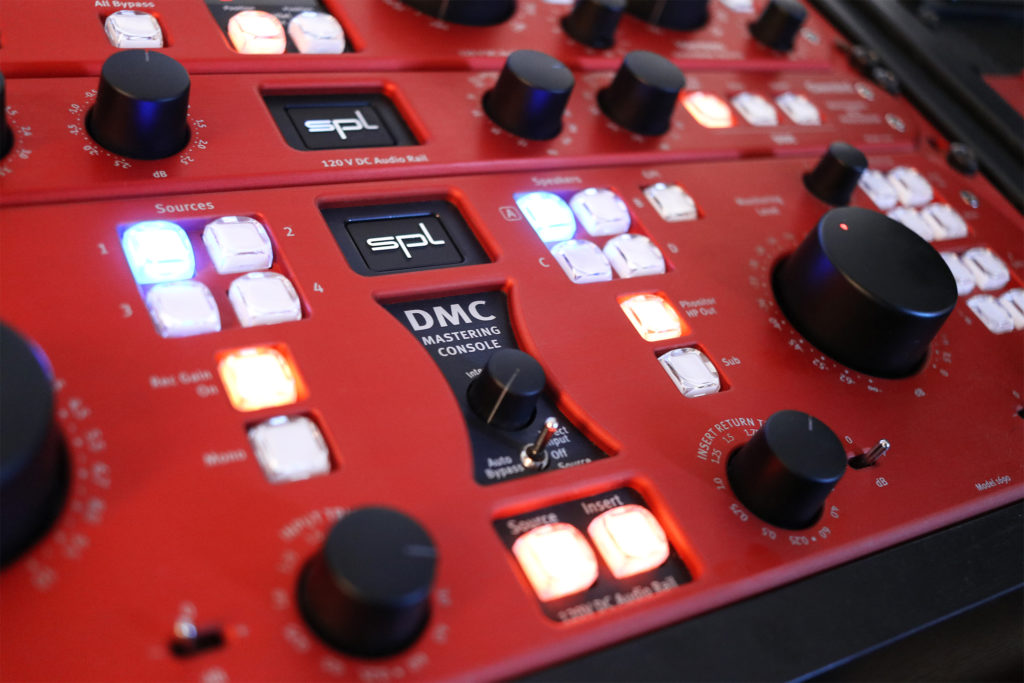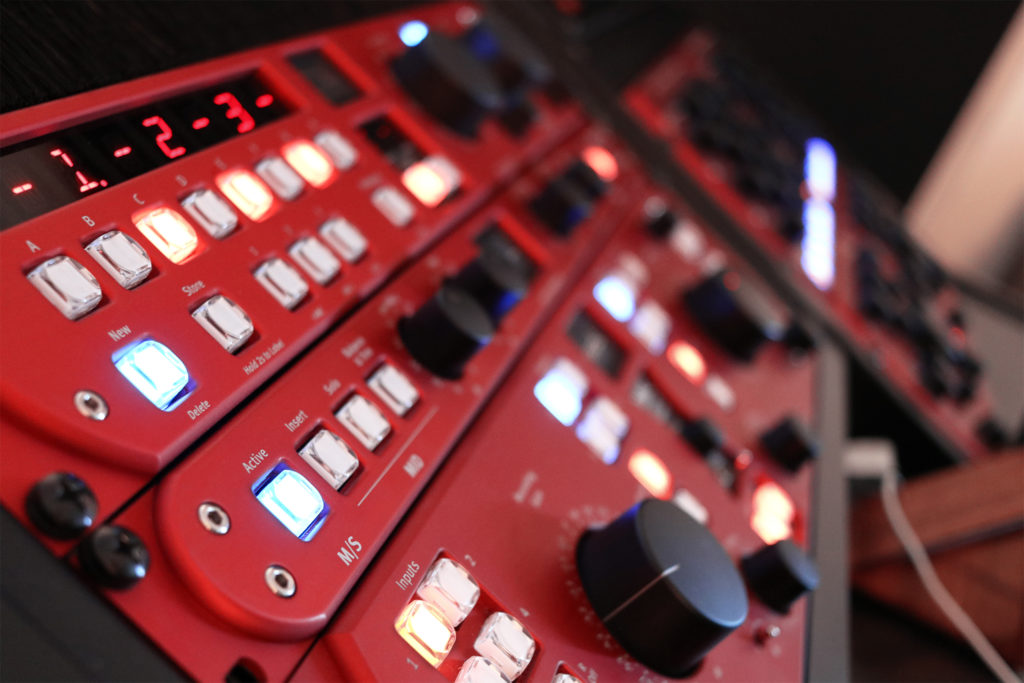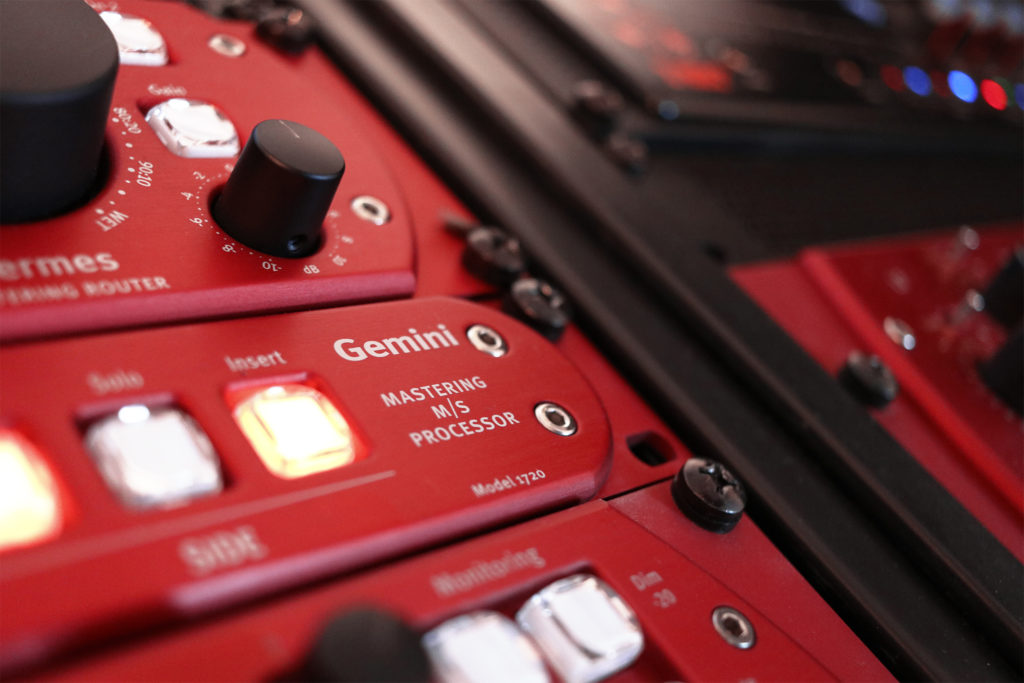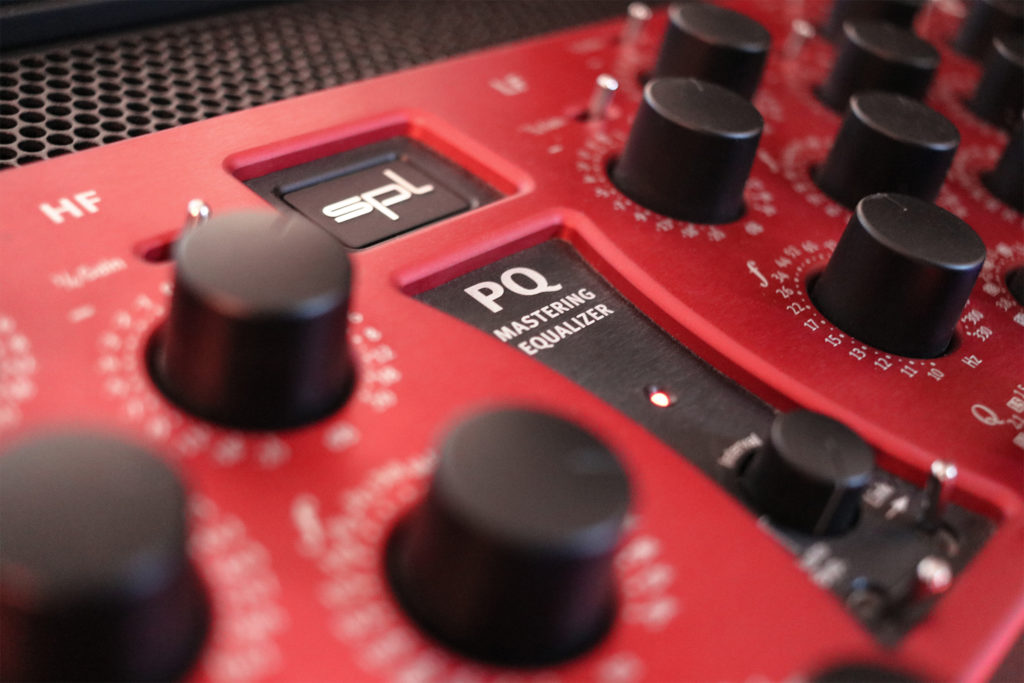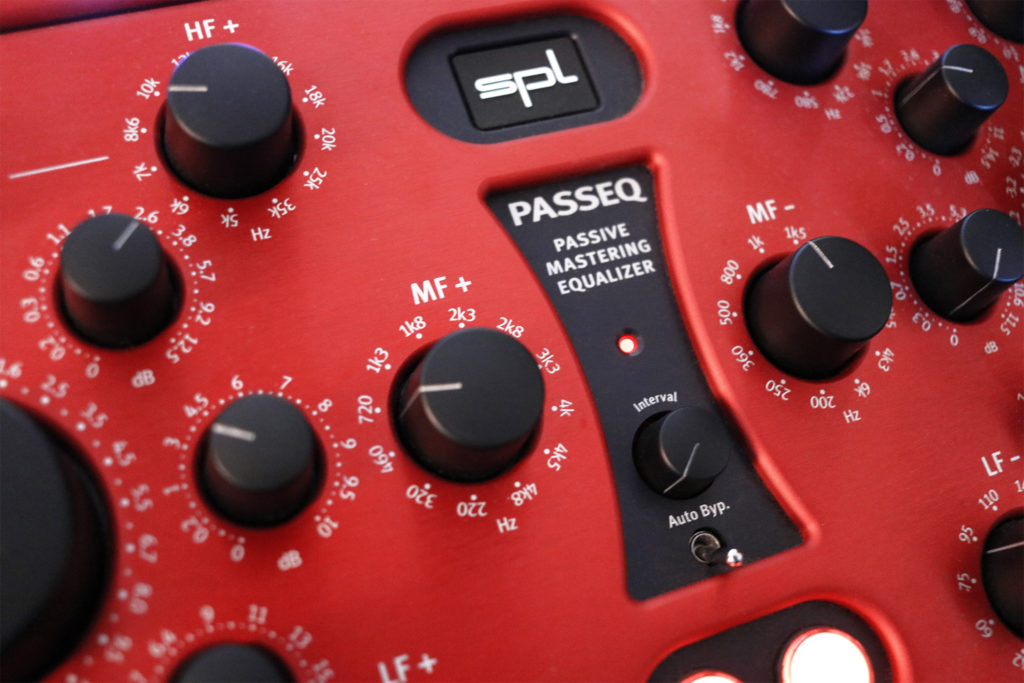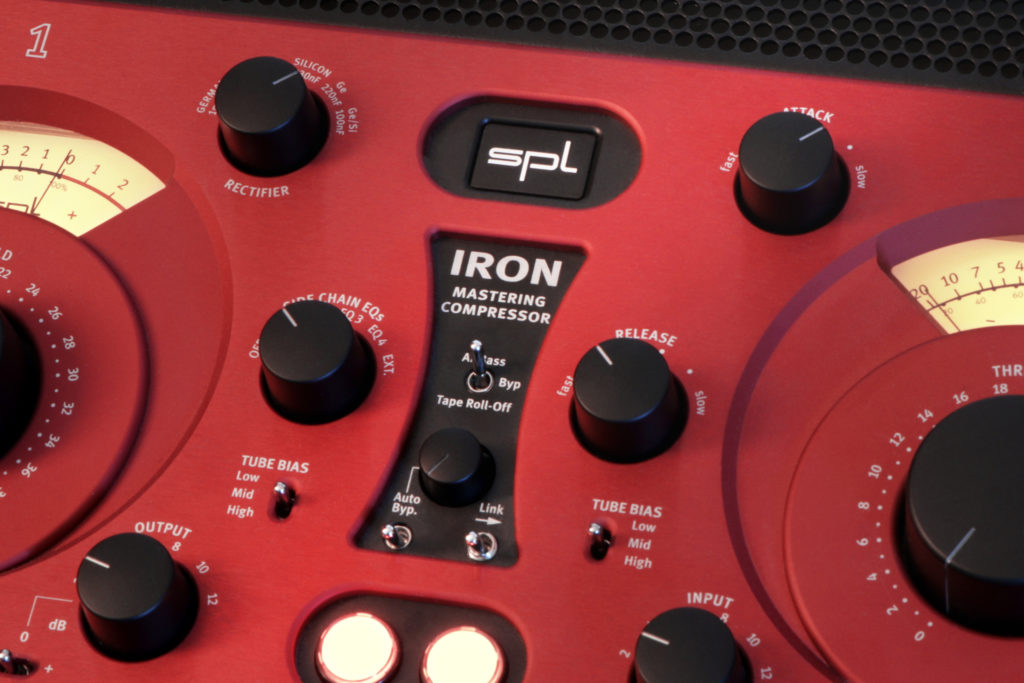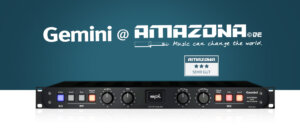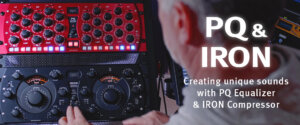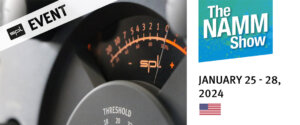We are proud to present a new series of interviews we will publish here. For this first one, we visited mastering engineer Dan D’Ascenzo in his Leftright Audio studio in Belgium and did a little interview with him. Dan has been a creative Mastering and Mixing Engineer with Worldwide credits for more than 15 years. He is specialised in optimised mastering for streaming services and download stores and is an SPL power user and a proponent of the SPL 120V Technology.
We hope you enjoy this new series. Here we go:
What do you personally think is the biggest advantage of analog outboard equipment in mastering?
I consider mastering as a creative step in the music production path. When customers send me their works to master, I have a clear vision on the direction I want to bring them to. My equipment is just my toolset to achieve this creative decisions. The way I can play with this gear through gain staging and turning the knobs physically is way more faster for me as with plugins. Some engineers get great results with plugins but for me the result is more efficient with analog equipment.
What would you say are the most important characteristics of our 120V Technology within your workflow?
Definitely Instant 3D! This is my main one. Even if I let the audio signal just trough the SPL series without any additional settings I would get an Instant 3D stereo image. The bigger dynamic range gives me also plenty of room to play with.
DMC
The centerpiece of my rack. Such a lovely and versatile unit. Appart of the Auto Bypass I use every parameter of it. The Input and Insert Return trim level gives me the ability to set the tight level before and after the analog chain, while the Recording Gain fine tunes the level to the A/D for printing.
I love the way you can A/B, level matched please, between the unmastered and mastered signal. And the feeling of both big knobs is really tremendous.
Hermes
What pops into my mind first is that Iʼm so amazed about how well the Hermes routes and distributes the whole 120V DC Audio rail together with the other units in my chain and how it brings the entire signal path another step further. Secondly, and equally important as the first one, is the flexibility to route the M/S signal in combination with the Gemini and to insert the desired units in between instantly, just by pressing the buttons in the intended order.
My actual configuration is now limitless regarding the routing possibilities. Last but not least, I really love the fact that the Hermes has 2 parallel mix functions with an individual gain control, besides the dry/wet control. So you can blend the signal dry/wet and/or use the gain. Itʼs very creative and handy when it comes to driving the Studer A80 Tape Machine.
Gemini
Before the Gemini, I used to use the SPL M/S Master. But again. The 120V DC audio rail rules 🙂 I often use the Sontec EQ in M/S. Gemini is the analog hardware which gives me the opportunity to shape the mid and side separately.
Solo the side is a function that I really love. I always wanted to have it in the hardware chain. Same as the Elliptic Filter.
PQ
99% of the time I’m boosting and have all bands set to Proportional Q! This EQ is probably the best EQ on the market. The precision you have to shape the sound to taste is great.
Of course on top of that you can activate or disable any bands, individually choosing Constant or Proportional Q is such an amazing feature.
PASSEQ
Like the PQ Iʼm mostly boosting with the PASSEQ as well. I really love the way how my master sounds with the 720Hz engaged! I also cut the top high end from 11Khz.
But as the Q is set to the widest, then you can boost and cut in a really smooth way. And of course the output knob to level match is very handy.
Find further information about Dan and his work at: www.leftrightaudio.com
To listen to some examples and stay in touch with Dan on his Social Media Channels, feel free to check this link:

